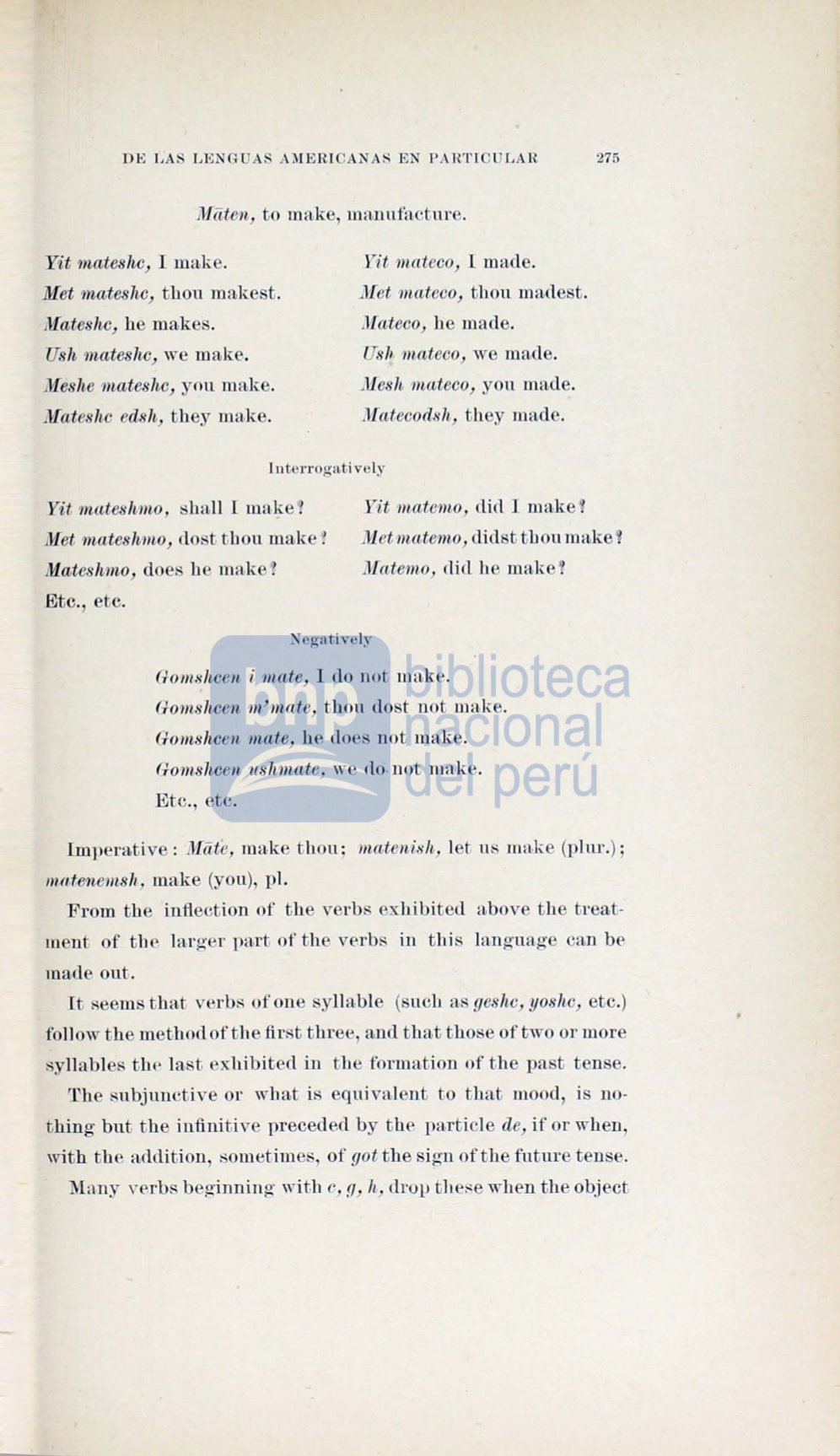

DJ<; l,AS LENGUAS AMERICANA:'; EN PARTlCULAH
275
Jlfaten,
to make, manufacture.
Yit niateshe,
I make.
Met mateshe,
thou makest.
ilfateshe,
he makes.
Ush inateshe,
we make.
Meslte niateshe,
you make.
Jl:fateshe edsh,
they make.
Yit mateeo, I
macle.
Jlfet inateeo,
thou maclest.
,Jfoteeo,
he macle.
Us/I.
mateeo,
we macle.
,lfesh mateeo,
you macle.
Jlfoteeodsh,
they macle.
lnterroga,tively
Yit
inctteshino,
shall
I
mal~e
l
Met inatesh?no,
clost tbou make1
Matesh1no,
cloes be
make~
Yit inateino,
clid
I
make~
Metnuiteino,
clidst tbou
make~
Jlfciteino,
rlitl he
make ~
Etc., etc.
Negativel~.,.
G-0111.sheen
i
mette,
1
do not make.
Goinsheen m'nuite,
thou clost uot make.
Go1nsheen mate,
he does not make.
(-fomslwen usl11ncite,
we
,¡o.
not
nrn,ke.
Etc., etc.
Imperative :
11ate,
make thou;
mr~tenish,
Jet us 111a,ke (pltu'.);
11wtene11ish,
make (you), pl.
From the inflection
of
the verb exhibited above the treat–
ment of the larger part of the verbs in tbis lan¡¡;uage can be
made out.
It
seems tbat verbs of one sylht ble (suclt as
.íJeshc,
yoshe,
etc.)
follow the methorlofthe first three, and tlrnt those oftwo or more
syllables tbP last exhibited in tl1e formation
of
the past tense.
'.rhe subjunctive or what is equivalent to that mood, is no–
thing but the infinitive preceded by tbe particle
de,
if or whe11,
with tbc adclition, ;;ometime , of
got.
the. ign ofthe fntnre tense.
Many 1·erbs beg'innin1r with
e,
ff,
11,
LhO!J
tl1e;;e when the object
















